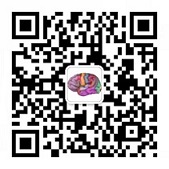1964年国际抗癫痫联盟(ILAE)癫痫发作分类
1、部分性发作(Partial seizures)
- 具有初级症状(With elementary symptomatology)
- 具有运动症状(With motor symptoms)
- 局限运动(不伴随扩散)(focal motor (without march))
- 杰克逊发作(jacksonian)
- 扭转性(adversive)
- 姿势性(postural)
- 躯体抑制性(somatic inhibitory)
- 涉及言语(包括发声和言语的中止)(involving speech (including vocalization and arrest of speech))
- 有特殊感觉或躯体感觉症状(With special sensory or somatosensory symptoms)
- 躯体感觉(somato-sensory)
- 视觉(visual)
- 听觉(auditory)
- 嗅觉(olfactory)
- 味觉(gustatory)
- 眩晕(vertiginous)
- 有自主神经症状(With autonomic symptoms)
- 复合型(Compound forms)
- 具有运动症状(With motor symptoms)
- 具有复杂症状(有时可能以初级症状先起始)(With Complex Symptomatology (which may sometimes begin with elementary symptomatology))
- 只有意识受损(With impaired consciousness alone)
- 具有认知性症状(With intellectual symptomatology)
- 伴有记忆障碍(包括健忘、似曾相识感)(with dysmnesic disturbances (including amnesia, déjà vu, déjà vécu),原文后面几个单词为法语,考虑和Gastaut为法国人有关)
- 有观念上的干扰(包括“强迫思考”)(with ideational disturbances (including “forced thinking”))
- 具有情感性症状(With affective symptomatology)
- 具有“精神感觉”性症状(错觉、幻觉)(With “psychosensory” symptomatology (illusions, hallucinations))
- 有“精神运动”性症状学(自动症)(With “psychomotor” symptomatology (automatisms))
- 复合型(Compound forms)
- 继发全面性(所有形式的部分性癫痫发作,初级或复杂症状都可以演变为全面性发作,有时如此迅速以至于局灶特征可能观察不到,这些全面性发作可能是对称或不对称的,强直或阵挛,但最常见的是强直-阵挛型)(Secondarily Generalized (all forms of partial seizures, with elementary or elaborated symptomatology, can develop into generalized seizures, sometimes so rapidly that the focal features may be unobservable. These generalized seizures may be symmetrical or asymmetrical, tonic or clonic, but most often tonic-clonic in type))
2、全面性发作(Generalized seizures)
- 非惊厥性发作(Non-convulsive seizures)
- 只有意识受损(With impairment of consciousness only)
- 短暂时间(突然开始和结束)(Brief duration (beginning and ending abruptly))
- 典型“失神”(typical “absence”)
- 不典型“失神”(atypical “absence”)
- 长时间持续(Long duration (‘‘absence status”))
- 短暂时间(突然开始和结束)(Brief duration (beginning and ending abruptly))
- 意识受损同时伴有其他现象(With other phenomena associated with impairment of consciousness)典型、不典型失神或失神持续状态伴随以下表现(Absences, typical or atypical, and the absence status can occur):
- 伴轻微阵挛成分(肌阵挛失神)(with mild clonic components (myoclonic absences))
- 伴姿势性张力增加(with increase of postural tone, symmetrical or asymmetrical (absences with retropulsion or gyration)
- 伴姿势性张力减退或消失((“跌倒发作”或持续较长时间的失张力发作))(with diminution or ablution of postural tone (“drop attacks” or atonic seizures of longer duration)
- 伴自动症(with automatisms)
- 伴自主神经现象(如一些腹型发作、遗尿性失神等)(with autonomic phenomena (some forms of abdominal seizures, absences associated with sphincter incontinence, etc.)
- 混合形式(as mixed forms)
- 只有意识受损(With impairment of consciousness only)
- 惊厥性发作(Convulsive seizures)
- 肌阵挛(Myoclonic jerks)
- 全面性(包括较短时间的“婴儿痉挛”)(generalized(including the shortest “infantile spasms”))
- 不完整的(fragmentary)
- 阵挛性发作(Clonic seizures)
- 强直性发作(包括较长时间的“婴儿痉挛”)Tonic seizures (including the longest "infantile spasms")
- 强直阵挛性发作(Tonic-clonic seizures)
- 肌阵挛(Myoclonic jerks)
3、在儿童中一侧或主要以一侧为主的癫痫发作(以阵挛、强直或强直阵挛性发作为特征,伴或不伴有意识障碍的,只表现或主要表现在一侧。这种发作有时从一边移到另一边,但通常不是对称的)(Unilateral or predominantly unilateral seizures in children)(Characterised by clonic, tonic or tonic-clonic convulsions, with or without an impairment of consciousness, expressed only or predominantly in one side. Such seizures sometimes shift from one side to the other but usually do not become symmetrical)
4、新生儿中无规则发作(伴可变的强直和/或阵挛性抽搐,通常是单侧的,有时可交替或全面性的)(Erratic seizures in new-born(With variable tonic and/or clonic convulsions, generally unilateral, sometimes alternating or generalized)
5、未能分类的癫痫发作(包括因数据不足或不完整而无法分类的所有发作)(Unclassified epileptic seizures)(Includes all seizures which cannot be classified because of inadequate or incomplete data)
参考文献:

 简体中文
简体中文  English
English 